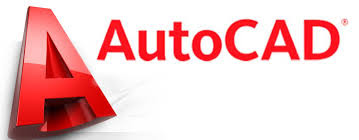FEATURE OF AUTOCAD
FAutoCAD is an interactive drawing system designed to
permit a user to construct or edit a drawing on a graphics display screen. It
was introduced in the early 1980’s by “Autodesk Inc.”, California, and
U.S.A.
FEATURE OF AUTOCAD Training
Following are some of the distinguish features on
the basis of which we prefer working in AutoCAD instead of working manually.
You
can create fine drawings with hundreds of colors, line types, hatch patterns,
presentation symbols and text styles. Even if you don’t like something about
your presentation after you have finished it, you can quickly change it. It
takes only a few simple steps to change the text style, color or line type and
you can print a fresh copy of the drawing.
There
are a number of ready-made presentation symbols and hatch patterns available in
CADD that can be used to enhance the look of drawings. For example, a site
planner can add tree symbols, shrubs, pathways, human figures, and other
landscape elements to create a site plan. Similarly, an architect can use
ready-made symbols of doors, windows, furniture, etc., to make a presentation.
In
addition to preparing impressive presentations on paper, you can use CAD to
make on- screen presentations. You can plug your computer into a projector and
present your ideas on- screen. Advanced CAD programs even allow you to create animated images. You can illustrate how a building would appear while
walking through it, or how a machine would function when different machine
assembly parts operate.
CAD provides the flexibility to make quick alterations to drawings. You can erase
any portion
Of
a drawing with pinpoint accuracy. It takes only seconds to do a job that could
take hours on a drawing board. In many cases, you won’t even have to erase the
drawing to make the change. You can
rearrange the existing components of the drawing to fit new shape. This enables
you to analyze design options with minimal effort.
The
following are some of the editing capabilities of CAD:
·
Move or copy drawing elements
·
Enlarge or reduce parts of a drawing
·
Add one drawing to another
·
Stretch a drawing to fit new dimensions
·
Make multiple copies of a drawing element
·
Change the size and style of text
· Change units of measure, accuracy and
style of dimensions
REASON FOR AUTOCAD Training
The
most potent driving force is competition. In order to win business, companies
used CAD to produce better designs more quickly and more cheaply than their
competitors.
Productivity is much improved by a CAD program enabling you to easily draw
polygons, ellipses, multiple parallel lines and multiple parallel curves.
The
speed is increased by the use of automatic fillets and chamfers;
the computer ability to "snap" automatically to particular geometric
points and features will spread the accurate positioning of line work.
Copy, rotate and mirror facilities are also very handy when drawing symmetrical
parts.
CAD
is very suitable for repetitive and fast documentation where a product is one
in a range of sizes. Assume that you manufacture a range of motor driven pumps
operating at different pressures. Many parts will be used in different
combinations in the range and the computer database documentation is programmed
accordingly.
A computerized tender can be sent with the appropriate specification and
technical details. On receipt of an order, all of the documentation relating to
manufacture, testing, dispatching and invoicing will be available.
Many
CAD systems permit the rapid generation of models of proposed designs as
wire-frames. The computer memory stores details of all the geometric data to
define each part of the frame. From the dimensions of the components, the
computer will calculate surface areas, volumes, weights for different materials,
center of gravity, moments of inertia and radii of gyration; it can also use
the applicable value for stress and other calculations, which are necessary
part of design.
The
biggest contribution of computers to the design process is soft prototyping -
the process of creating a 3D-computer model of a design that can be subjected
to computer-based testing. Soft prototypes are almost faster and cheaper to
built than real prototypes and are often better at their main activity than a
real ones; That because model shop prototypes usually use processes and
materials very different from those ultimately used for the production version
of the product.
A
typical design involves producing part drawings in a CAD program right up to
completion of design and making layers of the geometry required for the CAM
processing software. The description of part created in a CAD program is
translated into an appropriate format, such as DXF or IGES, and then loaded
into the CAM programs which are used then to create tool paths that trace this
description. This path can be edited and combined with other tool path files
where necessary and the combined forms a complete program for the machine tool
to manufacture the part.




Comments
Post a Comment